By Dan Weisz
I’ve seen the Peregrine Falcon(s) somewhat regularly lately along Skyline Drive and on the north end of Swan Road. Below is a collection of photos from three different times recently: there are two sets of birds flying and one is of a bird preparing breakfast.
This Peregrine was ready to fly. Why he felt that this particular perch spot was good is beyond me. Wouldn’t it have been easier to perch on the flat telephone pole crossbeam rather than on the porcelain insulator and wire?
(And I’m using the term “he” although I don’t really know whether any of these birds are male or female. Male and female Peregrines differ in size but not in looks. Without seeing a mated pair side-by-side, I can’t tell who this bird is. It’s just easier for me to call it a “he”.)
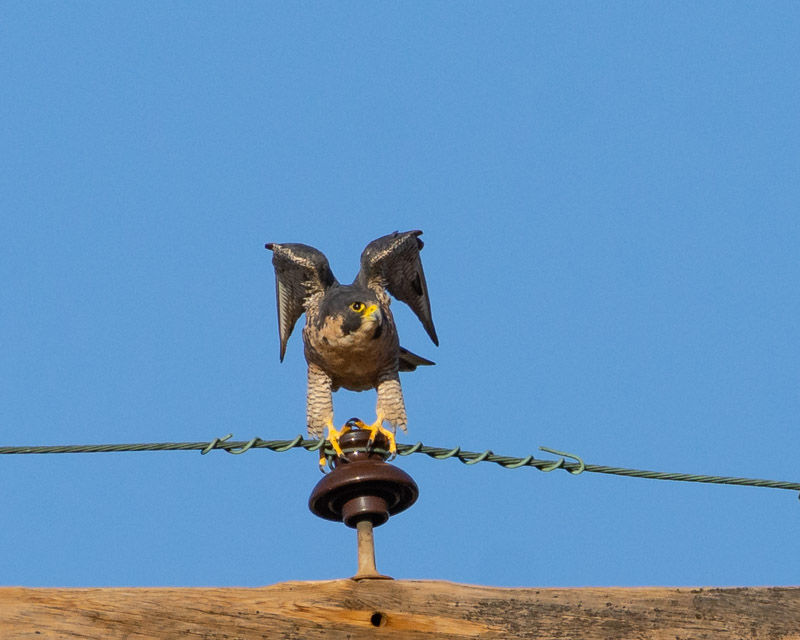
And take-off…
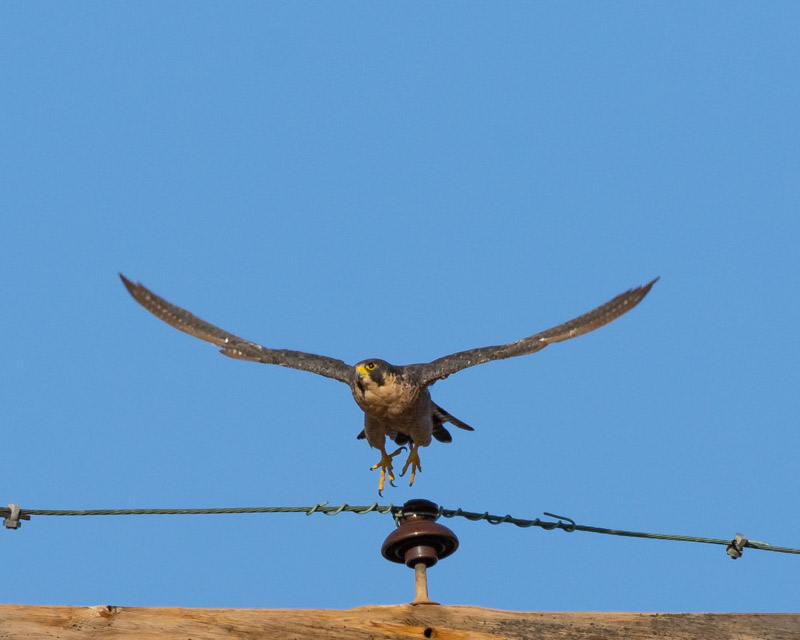
followed by a powerful downstroke.
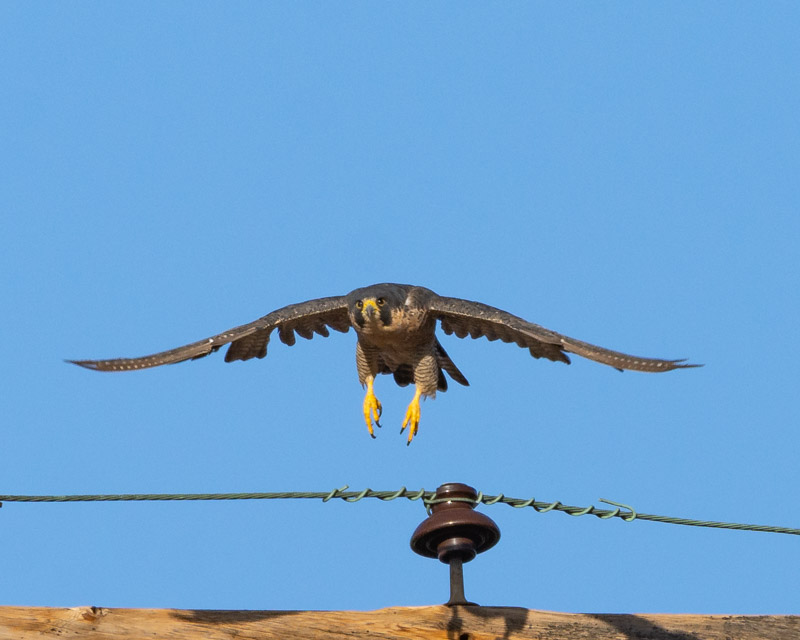
Another Peregrine Falcon, or the same one on a different morning, was ready to take off. This bird also perched on an unlikely spot. Why not perch on the top of the pole? Perhaps they have a better grip on the smaller perch with their long talons.
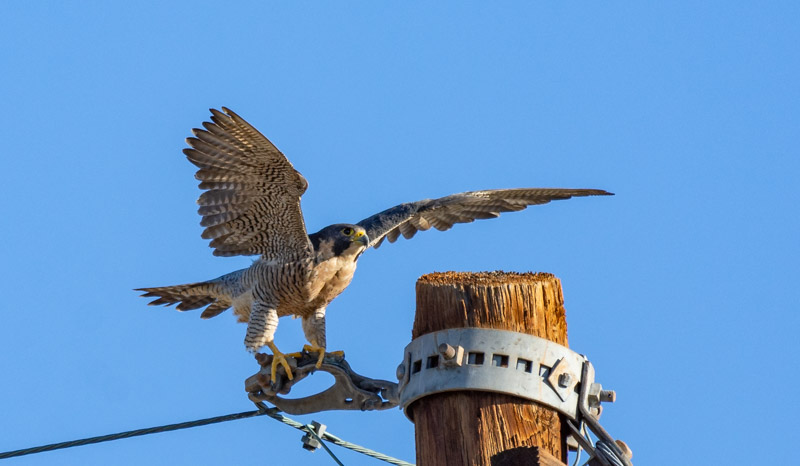
And a leap and a flap gets it up in the air. Look at the length of its toes! Each toe is about as long as the bird’s head is. Imagine if you had toes as long as your head was!
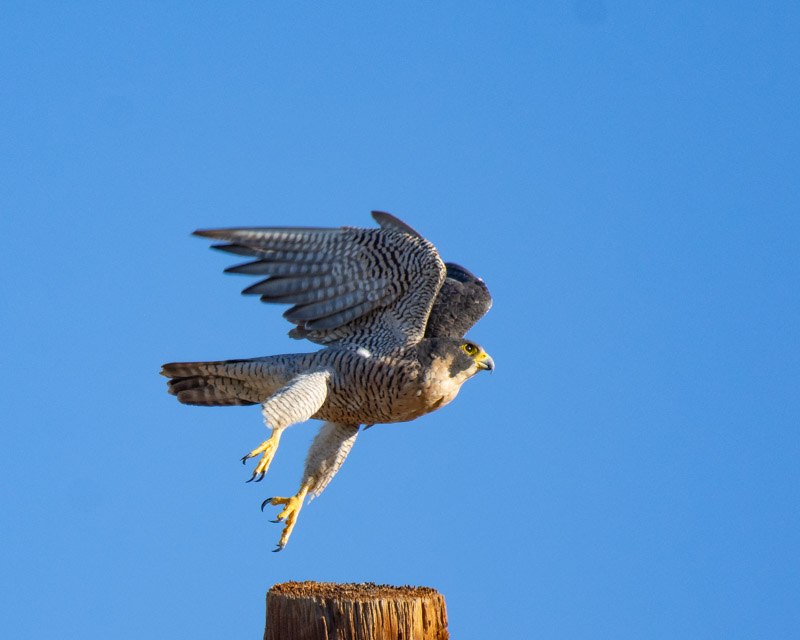
On another morning I came across a Peregrine Falcon with a freshly caught Mourning Dove meal. First step was to clean it. A Peregrine Falcon’s diet is almost exclusively birds, most of which they capture in flight.
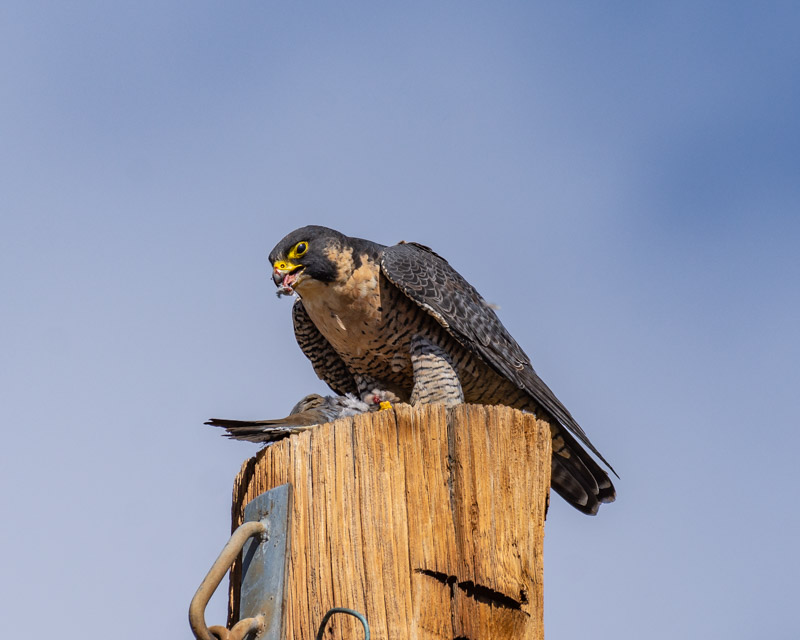
I watched as feathers showered to the ground. The Peregrine would rip the feathers out and in one motion throw its head to the side to toss the feathers away.
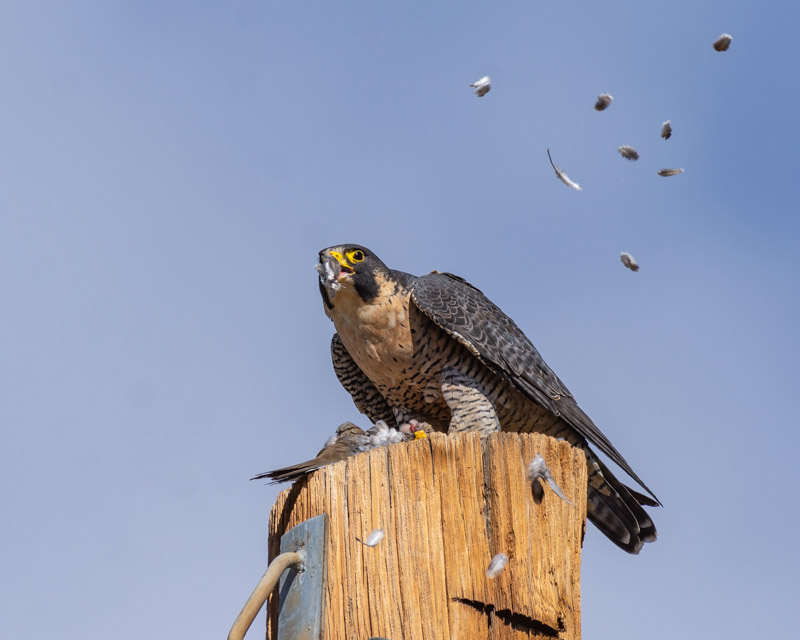
Sometimes, the feathers stuck to its beak. Yuck.
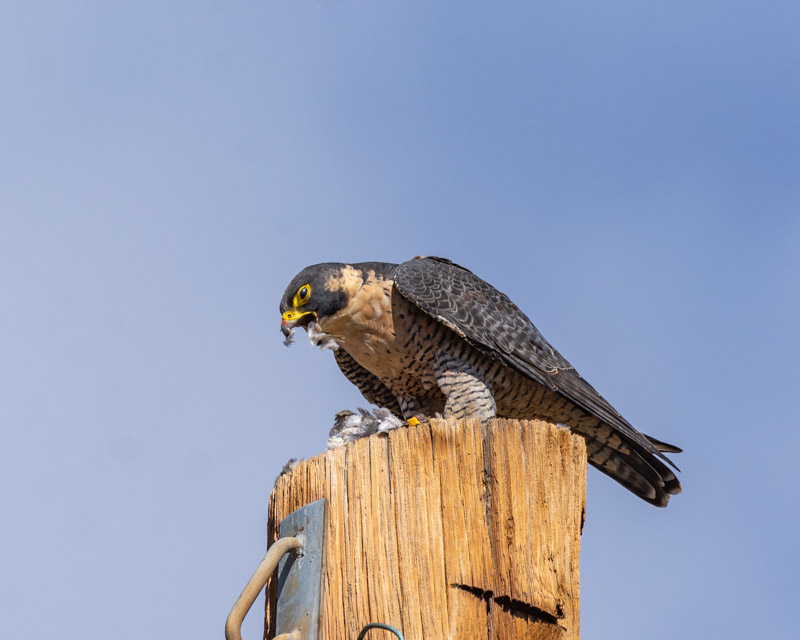
The depluming continued methodically with the Peregrine working non-stop. As an aside, isn’t the yellow eye-ring of the Peregrine Falcon stunning?
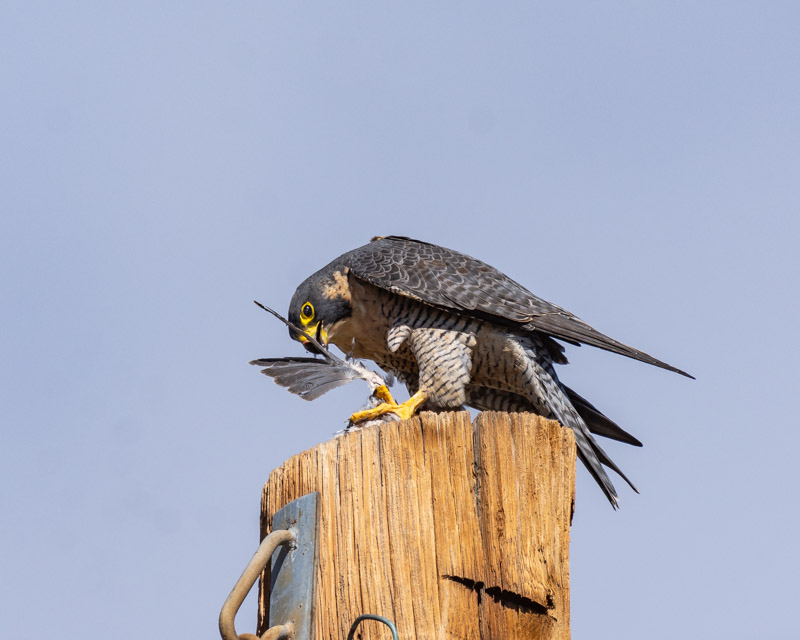
Quite a few photos show the Peregrine’s eye closed or partially closed through this process. This probably helps to prevent injury during such an aggressive activity.
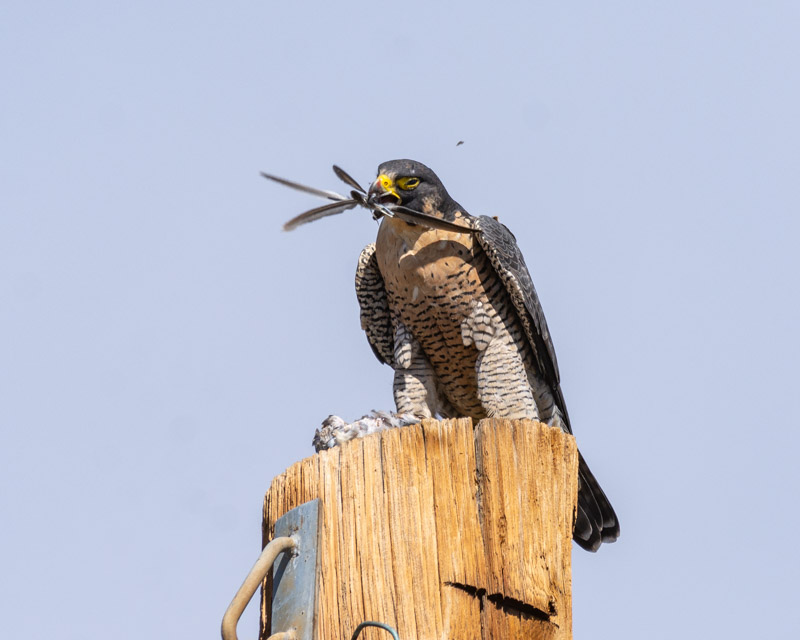
Peregrine Falcons are one of the few bird species found on six continents. (There isn’t quite enough flying prey in Antarctica!!). Although Peregrine Falcons were nearly all killed off in the continental United States by the early ’70’s because of DDT, the banning of the chemical and strong conservation efforts have succeeded in bringing the population in the US back. It is a treat to be able to see this bird close to our backyard.
